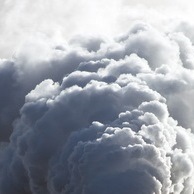Fire Safety in the Office, Does Your Company Meet the OSHA Requriements?

By: Kathleen Murray, Capstone Brokerage Client Advocate, October 17, 2016
Among all the safety problems an employee can encounter, fire can be the most frightening. Every year office fires cause millions of dollars in damage and result in hundreds of employee injuries. Yet many employees do not realize how their own actions can contribute to the risk of fire.
Common Causes of Office Fires:
1. Open flame
o Improper use of candles
o Improper handling of flammable or combustible liquids
o Matches and cigarettes that are improperly disposed of, or left unattended near combustibles.
2. Electrical
o Damaged electrical conductors, plug wires or extension cords
o Use of faulty, modified or unapproved electrical equipment
o Insufficient space or clearance between electrical heating equipment and combustibles.
o Short or overloaded circuits
o Loose electrical connections
o Lighting
Remember, if your clothing ever catches on fire do not forget to STOP, DROP, AND ROLL. Running will just fan the flames.
“Classes” of Fires:
There are four classes of fires, categorized according to the kind of material that is burning. Note that any given fire can fall into more than one class; a fire that involves both burning paper and kitchen grease would be a Class AB fire.
Class A fires are those fueled by materials that, when they burn, leave a residue in the form of ash, such as paper, wood, cloth, rubber, and certain plastics.
Class B fires involve flammable liquids and gasses, such as gasoline, paint thinner, kitchen grease, propane, and acetylene.
Class C Fires involve energized electrical wiring or equipment (motors, computers, panel boxes) Note that if the electricity to the equipment is cut, a Class C fire becomes one of the other three types of fires.
Class D fires involve exotic metals, such as magnesium, sodium, titanium, and certain organometallic compounds such as alkyllithium and Grignard reagents.
Importance of Good Housekeeping:
Combustible objects such as books, magazines and bags of materials waiting to be recycles act like lighters on a log fire. These
items should be stored properly and not piled up around the office.
Preventing Office Fires:
– Do not use electrical equipment that is in poor repair or that has a damaged cord.
– Do not overload circuits or extension cords.
– Use approved power bars instead of circuit splitters.
– Keep electrical heating appliances at a safe distance from combustibles
Let the fire department put out fires unless you are part of a trained fire fighting squad for your employer.
Prior to a Fire:
– Know where fire extinguishers are located in your office.
– Be aware of your office evacuation plan and know where to meet if a fire occurs.
– Locate the first aid kits in your area.
Every business should have a Fire evacuation plan in place. All employees should know where the fire extinguisher is, understand the companies fire evacuation plan and to practice fire prevention. It is imperative for the safety of all employees to be educated on Fire Safety. For more information on this topic or for assistance with a risk assessment for you needs contact your insurance broker.
Categories
- Benefits Resources
- Bonding
- BOP
- Business Insurance
- Commercial Auto
- Commercial Property
- Company News
- Construction
- Crime Insurance
- Cyber Insurance
- Directors & Officers
- Employee Benefits
- Employment Practice Liability Insurance
- Entertainment
- General Liability
- Health Insurance
- Healthcare
- Healthcare Reform
- Homeowners Insurance
- Hospitality
- Manufacturing
- Medical Malpractice
- Mining & Energy
- Nightclubs
- Personal Auto
- Personal Insurance
- Professional
- Restaurants
- Retail & Wholesale
- Risk Management Resources
- Safety Topics
- SBA Bonds
- Security
- Seminars
- Technology
- Tourism
- Transportation
- Uncategorized
- Workers Compensation
Archives
- May 2021
- November 2020
- October 2020
- September 2020
- August 2020
- July 2020
- June 2020
- May 2020
- November 2018
- September 2018
- August 2018
- May 2018
- April 2018
- March 2018
- February 2018
- January 2018
- December 2017
- November 2017
- October 2017
- September 2017
- August 2017
- July 2017
- June 2017
- May 2017
- April 2017
- March 2017
- February 2017
- January 2017
- October 2016
- September 2016
- August 2016
- July 2016
- June 2016
- May 2016
- April 2016
- March 2016
- February 2016
- January 2016
- December 2015
- November 2015
- October 2015
- September 2015
- August 2015
- July 2015
- June 2015
- May 2015
- April 2015
- March 2015
- February 2015
- January 2015
- December 2014
- November 2014
- October 2014
- September 2014
- August 2014
- July 2014
- June 2014
- May 2014
- April 2014
- March 2014
- February 2014
- January 2014
- December 2013
- November 2013
- October 2013
- September 2013
- August 2013
- July 2013
- June 2013
- February 2013
- November 2011
- October 2011
- September 2011
- July 2011
- June 2011
- March 2011
- November 2010
- October 2010
- September 2010
- April 2010
- February 2010
- November 2009
- October 2009
- November 2008
- August 2008


